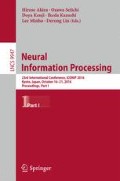Abstract
The number of security incidents faced by Android users is growing, along with the surge in malware targeting Android terminals. Such malware arrives at the Android terminals in the form of Android Packages (APKs). Assorted techniques for protecting Android users from such malware have been reported, but most of them focus on the APK files themselves. Different from these approaches, we use metadata, such as web information obtained from the online APK markets, to improve the accuracy of malware identification. In this paper, we introduce malware detection schemes using metadata, which includes categories and descriptions of APKs. We introduce two types of schemes: statistical scheme and support vector machine-based scheme. Finally, we analyze and discuss the performance and usability of the schemes, and confirm the usability of web information for the purpose of identifying malware.
Access this chapter
Tax calculation will be finalised at checkout
Purchases are for personal use only
Notes
- 1.
- 2.
We used MALLET for running LDA and considered 300 topics because the MALLET documentation states that “The number of topics should depend to some degree on the size of the collection, but 200 to 400 will produce reasonably fine-grained results.”
- 3.
References
Blei, D.M., Ng, A.Y., Jordan, M.I.: Latent Dirichlet allocation. J. Mach. Learn. Res. 3, 993–1022 (2003)
Cybozu Labs: Language Detection Library for Java, December 2014. https://code.google.com/p/language-detection/
Gorla, A., Tavecchia, I., Gross, F., Zeller, A.: Checking app behavior against app descriptions. In: ICSE 2014, Proceedings of the 36th International Conference on Software Engineering (2014)
MacQueen, J.: Some methods for classification and analysis of multivariate observations. In: Proceedings of the Fifth Berkeley Symposium on Mathematical Statistics and Probability, vol. 1: Statistics, pp. 281–297 (1967)
McCallum, A.K.: MALLET: a machine learning for language toolkit, December 2014. http://mallet.cs.umass.edu
OPERA SOFTWARE ASA: Opera Mobile Store, January 2015. http://apps.opera.com/
Ray Pereda: stemmify, December 2014. https://rubygems.org/gems/stemmify
RubyGems.org: kmeans, December 2014. https://rubygems.org/gems/kmeans/
Sarma, B.P., Li, N., Gates, C., Potharaju, R., Nita-Rotaru, C., Molloy, I.: Android permissions: a perspective combining risks and benefits. In: Proceedings of the 17th ACM Symposium on Access Control Models and Technologies, SACMAT 2012, pp. 13–22. ACM, New York (2012). http://doi.acm.org/10.1145/2295136.2295141
Schölkopf, B., Smola, A.J.: Learning with Kernels: Support Vector Machines, Regularization, Optimization, and Beyond. MIT Press, Cambridge (2001)
Takahashi, T., Ban, T., Mimura, T., Nakao, K.: Fine-grained risk level quantication schemes based on APK metadata. In: Arik, S., Huang, T., Lai, W.K., Liu, Q. (eds.) ICONIP 2015. LNCS, vol. 9491, pp. 663–673. Springer, Heidelberg (2015). doi:10.1007/978-3-319-26555-1_75
Takahashi, T., Nakao, K., Kanaoka, A.: Data model for android package information and its application to risk analysis system. In: First ACM Workshop on Information Sharing and Collaborative Security. ACM, November 2014
Vapnik, V.: Statistical Learning Theory. Wiley, New York (1998)
VirusTotal: virustotal for android, January 2015. http://www.virustotal.com/ja
Wang, Y., Zheng, J., Sun, C., Mukkamala, S.: Quantitative security risk assessment of android permissions and applications. In: Wang, L., Shafiq, B. (eds.) DBSec 2013. LNCS, vol. 7964, pp. 226–241. Springer, Heidelberg (2013). doi:10.1007/978-3-642-39256-6_15
Author information
Authors and Affiliations
Corresponding author
Editor information
Editors and Affiliations
Rights and permissions
Copyright information
© 2016 Springer International Publishing AG
About this paper
Cite this paper
Takahashi, T., Ban, T., Tien, CW., Lin, CH., Inoue, D., Nakao, K. (2016). The Usability of Metadata for Android Application Analysis. In: Hirose, A., Ozawa, S., Doya, K., Ikeda, K., Lee, M., Liu, D. (eds) Neural Information Processing. ICONIP 2016. Lecture Notes in Computer Science(), vol 9947. Springer, Cham. https://doi.org/10.1007/978-3-319-46687-3_60
Download citation
DOI: https://doi.org/10.1007/978-3-319-46687-3_60
Published:
Publisher Name: Springer, Cham
Print ISBN: 978-3-319-46686-6
Online ISBN: 978-3-319-46687-3
eBook Packages: Computer ScienceComputer Science (R0)

